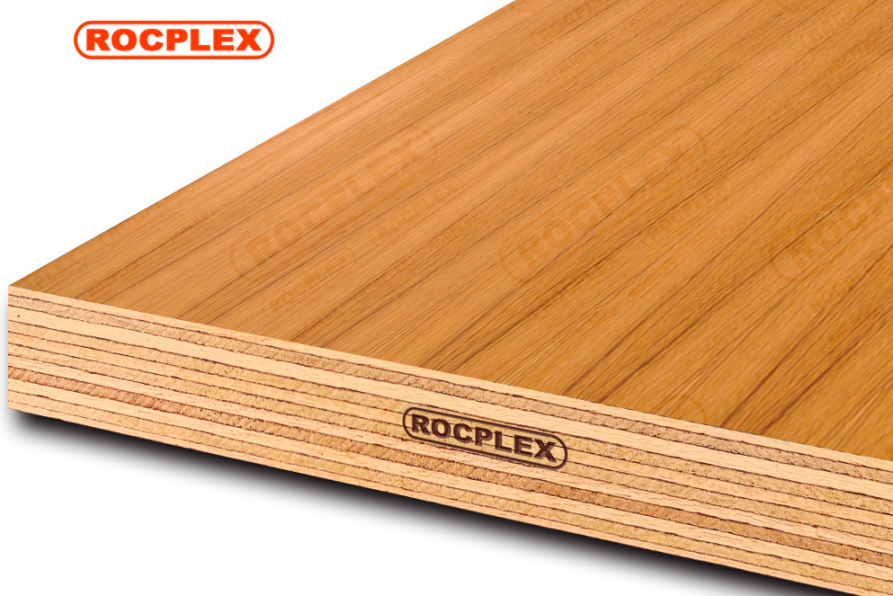Plywood prices are influenced by an intricate interplay of factors that span the supply chain. These factors include the cost of raw materials, production processes, transportation, and market demand. Buyers keen on understanding plywood pricing dynamics should analyze these variables to grasp why prices fluctuate over time. Manufacturers like ROC often provide valuable insights into these factors, enabling buyers to make informed decisions.
Plywood is a popular and vital component in the construction and building sector, from stabilizing walls to constructing furniture. Yet, understanding the often fluctuating prices of plywood can be difficult. This article seeks to demystify pricing complexities by offering help with obtaining wholesale plywood and suggesting tried and tested negotiation tactics when dealing with suppliers.
When it comes to sourcing plywood at wholesale prices, building a direct connection with manufacturers like ROC can be advantageous. Such interactions provide buyers with the opportunity to explore bulk purchasing options, negotiate deals, and establish long-term partnerships. Manufacturers often offer pricing advantages for larger orders, making it a prudent move for buyers looking to optimize their procurement process.
Understanding Plywood: The Backbone of Construction
Before delving into the nuances of pricing, it’s crucial to understand the significance of plywood in construction. Plywood, a versatile engineered wood product, comprises layers of thin wood veneers bonded together with strong adhesives. This structure lends plywood exceptional strength, stability, and resistance to warping or cracking, making it a preferred choice for various construction projects.
Manufacturer Spotlight: ROC Plywood
One noteworthy manufacturer that has consistently delivered quality plywood is ROC. With a reputation for producing reliable and durable construction materials, ROC has become a trusted name in the industry. Their commitment to adhering to stringent quality standards ensures that buyers receive plywood that meets their project requirements.
Factors Influencing Plywood Prices
Several factors contribute to the fluctuating plywood prices, making it imperative for buyers to stay informed:

1. Raw Material Costs: Plywood production relies on wood veneers, which are susceptible to market variations. Changes in timber prices can significantly impact plywood costs.
2. Grade and Quality: Plywood comes in various grades, such as A, B, C, and D, indicating surface quality and appearance. Higher-grade plywood typically commands a higher price due to enhanced aesthetics and structural integrity.
3. Type of Plywood: Different types of plywood, like softwood and hardwood plywood, marine plywood, and structural plywood, cater to distinct needs. Prices vary based on intended use and manufacturing complexity.
4. Market Demand: Fluctuations in demand due to seasonal trends or economic conditions can influence plywood prices. High demand often leads to increased costs.
5. Production Techniques: Advanced production methods and technologies, such as pressure-treated plywood or fire-resistant plywood, can elevate prices due to added benefits.
Cost-Saving Strategies for Wholesale Plywood Buyers
1. Planning Ahead for Bulk Purchases
One of the cardinal rules of cost-saving in wholesale plywood procurement is planning ahead. By anticipating the needs of upcoming projects, buyers can consolidate their orders, benefitting from economies of scale. This approach not only reduces the overall cost per unit but also streamlines the supply chain, minimizing unnecessary transportation and logistical expenses.
2. Exploring Alternatives and Grades
ROC and other manufacturers typically offer a range of plywood grades, each tailored to different applications and budgets. Savvy buyers should explore the spectrum of available options and consider substituting higher-end grades with suitable alternatives that meet project requirements. This approach can significantly impact the final cost without compromising on quality.
Sourcing Plywood at Wholesale Prices
Securing plywood at wholesale prices can significantly impact project budgets. Here are strategies for buyers to consider:
1. Direct Manufacturer Contacts: Building relationships with manufacturers like ROC can yield favorable pricing. Manufacturers might offer bulk discounts or special rates to loyal clients.
2. Wholesale Distributors: Wholesale distributors specialize in bulk purchases. Collaborating with them can lead to competitive prices and a consistent supply.
3. Group Purchases: Partnering with other construction professionals for group purchases allows buyers to leverage collective buying power for reduced rates.
Budgeting Wisely: Tips for Plywood Procurement
1. Setting a Clear Budget Ceiling
Before embarking on a wholesale plywood purchase, it’s essential to establish a clear budget ceiling. This budget should account not only for the cost of the plywood sheets but also for any associated expenses such as transportation, handling, and storage. Staying within these limits ensures that the procurement process aligns with overall project financial goals.
2. Negotiating Skillfully
Negotiation is a powerful tool in the hands of a savvy buyer. Engaging with manufacturers like ROC allows buyers to discuss pricing, terms, and delivery schedules. A well-prepared negotiation strategy can result in favorable discounts or concessions, further enhancing the cost-saving potential of wholesale plywood procurement.
Mastering Negotiation for Better Deals
Effective negotiation is an art that can lead to more favorable pricing:
1. Research and Knowledge: In-depth research about current plywood prices, market trends, and competing suppliers equips buyers with valuable negotiation leverage.
2. Volume Commitment: Suppliers often offer discounts for larger orders. Buyers can use their projected volume as a bargaining chip.
3. Long-Term Partnerships: Demonstrating commitment to a long-term business relationship can encourage suppliers to provide better pricing.
4. Value Exchange: Showcase the value of repeat business and offer prompt payments or referrals in exchange for more favorable terms.
Conclusion
Plywood prices, influenced by a plethora of factors, can be a puzzle to solve for construction professionals. However, armed with knowledge about manufacturing practices, key influencers of pricing, and effective negotiation strategies, buyers can navigate the plywood market with confidence. ROC, a reliable manufacturer, stands as a beacon of quality in this landscape, offering plywood that not only meets construction needs but also stands the test of time. By understanding the nuances of plywood prices and adopting strategic approaches, buyers can ensure cost-efficient projects without compromising on quality.
Post time: 8 月-17-2023

